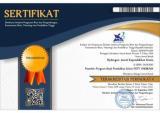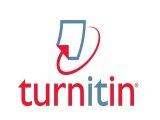Pemisahan Perak dari Limbah Fotorontgen dengan Teknik Membran Cair Berpendukung Menggunakan Pengemban Gabungan TBP dan D2EHPA
Abstract
The photorontgen process produces waste that is harmful to the environment because it contains silver ions that are toxic to living organisms. The silver content in photorontgent waste is 2000 mg / L, while the permissible threshold value for silver in aquatic is 0.1 - 1.0 mg / L, so the disposal of photorontgent waste into the waters will be dangerous. However, silver metal has high economic value so that silver metal separation from x-ray waste is required, in addition to reducing the environmental burden due to silver metal pollution, it is also expected to reuse the silver metal economically. The technique of separation that can be used is a supported liquid membrane (Supported Liquid Membrane, SLM). This technique has the advantage that its separation process is relatively easy because the extraction and stripping process takes place in one stage, the carrying solution as extractant is more stable in the supporting membrane and the amount of extractant required is small. This research studies the effect of waste dilution factors on the effieciency separation of silver from photorontgen waste. Separation was carried out at the optimum SLM condition by using combined carrier compound TBP and D2EHPA with a ratio of 0.25: 0.75, total concentration of 1 M in kerosene and 0.1 M HNO3 as stripping phase. Sample waste was diluted by a factor dilution 25, 50, 75 and 100 times. Measurement of metal content before and after separation is done with AAS. The results showed that the waste dilution factor influenced the efficiency of silver trasnpor through SLM. Percent of silver separation was obtained 21.33% in waste with 100 times dilution.
Keywords
silver, photorontgen waste, supported liquid membrane
Full Text:
PDFDOI: https://doi.org/10.33394/hjkk.v8i1.2582
Refbacks
- There are currently no refbacks.

This work is licensed under a Creative Commons Attribution-ShareAlike 4.0 International License.





